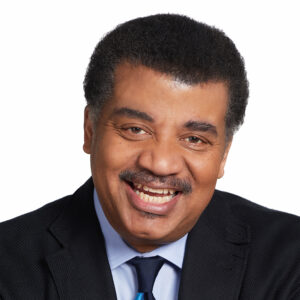About This Episode
How do particles get mass? Neil deGrasse Tyson and comedian Chuck Nice discover squarks, sneutrinos, the Higgs boson, and whether dark matter has a particle with theoretical physicist Brian Greene.
Can we finally get to the bottom of what happens when a quark falls into a black hole? Learn about the ultraviolet catastrophe, the start of quantum physics, and Max Planck quantizing packets of energy. We also discuss how Einstein won the Nobel prize for the discovery for which he is least famous.
We take a deep dive into the Higgs boson. Who’s Higgs? What’s a boson? Find out about how the Higgs field creates mass, the different quantum particles, and how quarks create protons and neutrons. Brian breaks down the theory of supersymmetry: does every particle have a counterpart? Learn about squarks, sneutrinos, and whether supersymmetry can give an answer to what dark matter is.
Is the fabric of spacetime woven by tiny wormholes? Discover the Casimir force, quantum fluctuations, and why you need so many dimensions in a string theory universe. We discuss whether the cosmological constant is, in fact, constant. Plus, find out about the biggest mismatch between theory and experiment in physics.
Thanks to our Patrons Neferyti, Sigrid Fry-Revere, Mark Steffen, Jennifer Okumura, Thomas Paris, Lena Smith, Eli Kononovich, Chris Plotts, Anh Trieu, and Jason Flood for supporting us this week.
NOTE: StarTalk+ Patrons can listen to this entire episode commercial-free.




 Unlock with Patreon
Unlock with Patreon


 Become a Patron
Become a Patron